Bringing a new life into the world is a life-changing event. But for many moms, the postpartum period brings more than joy; there is an emotional turbulence in this period that goes beyond the “blue babies”. Postpartum depression affects 1 out of 7 women globally; its symptoms can disrupt bonding with the baby, long-term well-being, and, most importantly, daily life. But with timely diagnosis, right treatment, and evidence-based care, PPD is curable.
This article breaks down the most effective and compassionate treatments for postpartum depression, backed by current research and mental health guidelines.
Recognizing the Symptoms Before Choosing the Right Treatment:
It’s essential to track the signs of PPD before going directly to treatment because it’s more than just sadness. It may include:
- Excessive worthlessness, guilt, and shame
- Difficulty bonding with the infant
- Persistent frustration and or low mood
- Sleep disturbances despite the baby’s needs
- Loss of interest in previously enjoyable activities
- Thoughts of self-harm or harming the baby
These symptoms mostly appear within the first week of birth but can also surface months later. The key is early recognition; studies also show that early treatment and intervention significantly improve recovery outcomes.
Read about: What Is Postpartum Depression?
Therapy: The Cornerstone of PPD Treatment

Talk therapy remains a first-line treatment for mild to moderate PPD symptoms, especially when women prefer to delay or avoid medication.
Cognitive Behavioral Therapy (CBT)
This evidence-based, structured approach helps new mothers develop healthy coping mechanisms and negative thought patterns. Randomized trials show CBT can reduce depressive symptoms significantly within 6–12 weeks.
Interpersonal Therapy (IPT):
IPT focuses on social support and improving relationships, which are often strained during early motherhood. Research has shown that IPT is highly effective, especially for women dealing with role transition or social isolation after the birth of their baby.
Both therapies can be offered in group or on one settings, and now teletherapy options have become more widely available, offering access to rural or homebound mothers.
Medication:
There comes a time in PPD when a chemical imbalance requires pharmacologic help. For mild to severe cases, or when the therapy alone isn’t working, antidepressants, particularly Selective Serotonin Reuptake Inhibitors (SSRIs), are often recommended. Medications like escitalopram and sertraline are considered safe for breastfeeding in most cases and are commonly prescribed.
According to guidelines from the American College of Obstetricians and Gynecologists (ACOG),60% of women reported reduced depressive symptoms due to SSRIs within 6-8 weeks. However, consultation with a healthcare provider who understands both postpartum and psychiatric care is needed to make medication decisions.
Know about: What Are the Postpartum Nursing Diagnosis and Care Plan?
Hormone-Based Treatment: A New Frontier

Recent innovations in postpartum depression therapy introduced hormone-based options such as brexanolone (a synthetic form of allopregnanolone, a hormone that drops after childbirth). It’s also the first FDA-approved treatment specifically for PPD.
Brexanolone is administered via a 60-hour IV infusion in a clinical setting. Though it’s an expensive treatment, it has shown rapid improvement in the symptoms of women facing severe postpartum depression. Research is ongoing, but it represents a new class of therapies that target hormonal fluctuations unique to the postpartum experience.
Lifestyle Adjustment: Mind-Body Connection
Lifestyle intervention is not a standalone treatment but can play a supportive role in managing symptoms.
- Balanced nutrition: whole foods and omega-3 fatty acids support brain development.
- Social support: open conversation with friends, partner, family, and open support groups reduces the sense of alienation.
- Mild exercise: even light walks can reduce anxiety and improve serotonin levels.
- Regular sleep: Prioritizing rest and sleep can act as a mood stabilizer and prevent worsening symptoms.
Professional treatments and clinical studies make these interventions more effective by linking healthy habits to improved postpartum mental health.
Complementary Therapies That Help

Conventional care shouldn’t be replaced, but many women seek out alternative therapies. Some women have shown benefit after using alternative therapy alongside conventional care.
- Acupuncture: small studies suggest that acupuncture may diminish PPD symptoms, though more research is still required.
- Mindfulness-Based Stress Reduction (MBSR): meditation techniques and mindfulness have been linked to reducing emotional reactivity and stress.
- Bright Light Therapy: particularly helpful for women with seasonal patterns in their depression.
Remember to always consult a license provider before adding these alternative methods to your care plan.
Partner and Family Involvement: A Treatment Ally
Treatment isn’t just about the mother; it’s about her support system. Isolation always delays healing, and dismantling isolation is the key to recovery. A 2020 review in BMC Pregnancy and Childbirth showed that women whose partners were educated about postpartum depression and actively participated in childcare had faster recovery rates and lower relapse risk.
Partners and family members can:
- Help with daily tasks to reduce anxiety
- Provide emotional validation
- Track concerning symptoms
- Encourage treatment adherence
Family therapy and emotional sessions can be helpful to create an emotional awareness among relatives to understand postpartum depression and how to support it meaningfully.
Daily Routines That Aid Recovery

Therapy and medications are cornerstones of postpartum depression treatment; small modifications in daily habits can significantly improve mental well-being. A 2018 study in the Journal of Affective Disorders found that women who followed a structured routine and engaged in consistent physical activity reported reduced depressive symptoms within eight weeks.
You don’t have to do an intense workout; gentle yoga, stroller walks, or even 10-minute stretching sessions can reduce stress hormones and help release endorphins. A blend of physical movement and exposure to natural sunlight also helps regulate circadian rhythms, mood stability, and improve sleep.
When Immediate Help Is Needed
Postpartum depression sometimes grows worse and can escalate into postpartum psychosis. It’s a rare but severe condition that includes:
- Hallucination
- Suicide thoughts
- Delusions
These symptoms are a psychiatric emergency and require immediate hospitalization. If a mother talks about harming herself or the baby, call the emergency service or go to the nearest hospital. Timely intervention saves lives.
Check out: What Are Common Postpartum Health Issues to Watch Out For?
Preventing Relapse After Recovery

There is a high possibility that postpartum depression can return even after symptoms improve, especially within the first year after birth. According to a Psychiatry Research study, there is a 50% lower relapse rate for women who continue therapy or check-ins for 6 months after initial recovery than those who stop abruptly.
Some relapse prevention strategies are:
- Setting realistic expectations for motherhood.
- Continuing support groups or counseling even after feeling “better”.
- Maintaining a consistence self-care or sleep schedule.
- Practicing mindfulness or relaxation techniques daily.
Healthcare advisors may also suggest tapering off medicine under supervision, slowly to avoid triggering symptom recurrence.
Final Thoughts:
Postpartum depression is a serious but treatable condition. From therapy and medication to hormone-based innovations and lifestyle changes, mothers today have access to more personalized, compassionate care than ever before. The journey to healing starts with awareness and continues with the support of trained professionals, loving families, and a community that prioritizes maternal mental health.
With the right treatment plan in place, women can move from feeling overwhelmed and lost to empowered and emotionally restored. No one should have to face postpartum depression alone, and with the right steps, no one has to.
Frequently Asked Questions:
1. Are there natural remedies that work for PPD?
Some women find relief from lifestyle approaches like omega-3 supplements, regular physical exercise, and mindfulness meditation. These can support recovery, but they should complement therapy, not replace it.
2. Can postpartum depression go away without treatment?
In some mild cases, symptoms may improve over time without treatment, but untreated postpartum depression can last months or even years and may worsen. Evidence suggests early treatment leads to faster recovery and prevents long-term mental health issues.
3. Can postpartum depression come back with future pregnancies?
Yes. Women who have experienced postpartum depression have a high possibility of regaining it in future pregnancies. Preventive strategies, which include support systems, early therapies, and proactive medical monitoring, can reduce recurrence risks.
4. Can postpartum depression be prevented?
While not always be prevented, risks of PPD can be reduced by building a strong support system, prenatal counseling, staying physically active, and managing stress.
5. What should I do if I suspect postpartum depression?
Reach out to a healthcare provider immediately. Early assessment, diagnosis, and treatment lead to faster recovery and healthier outcomes for both mother and baby.
Practical Ways to Recover Postpartum Depression
Postpartum journal to track moods, triggers, and daily reflections.
Blue light therapy lamp for improving mood, especially during darker months.
A weighted blanket to promote calmness and better sleep.
Comfortable nursing chair for stress-free feeding and bonding moments.
Herbal calming teas like chamomile or lavender to help unwind.
Aromatherapy diffuser with uplifting essential oils like citrus or peppermint.
Supportive postpartum pillow for comfort while resting or nursing.
Adult coloring books and markers for mindful, stress-reducing activities.
Warm bath soak with Epsom salts for muscle relaxation and mood lifting.
Comfortable loungewear to help feel cozy and cared for at home.


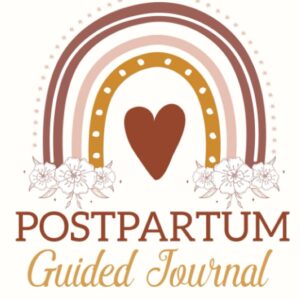
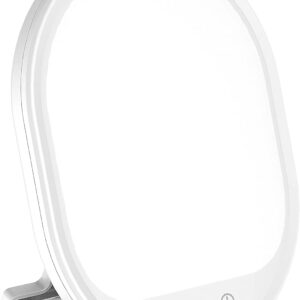


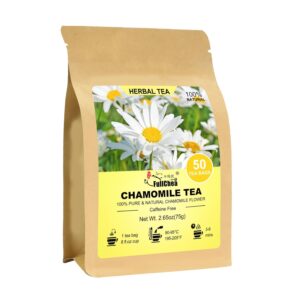
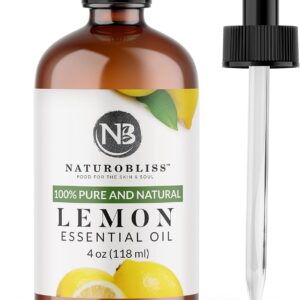
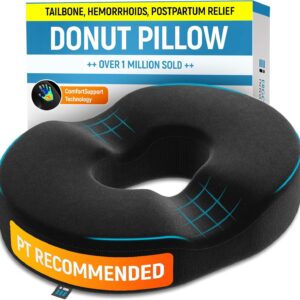
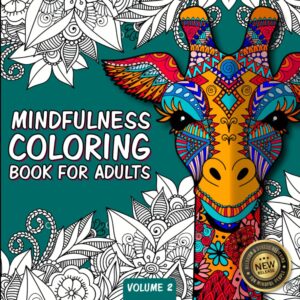
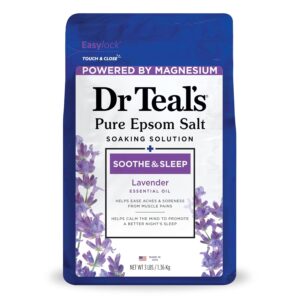

Add Comment